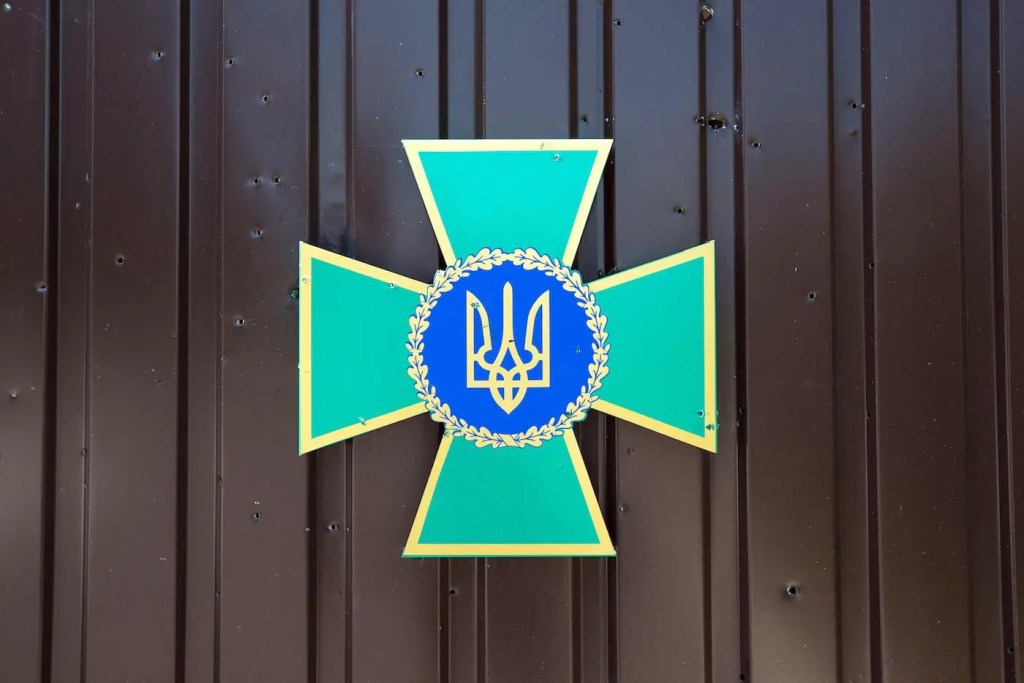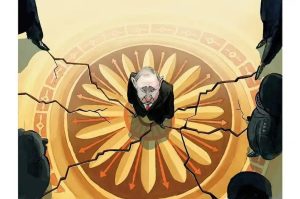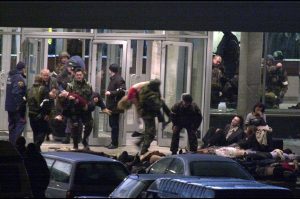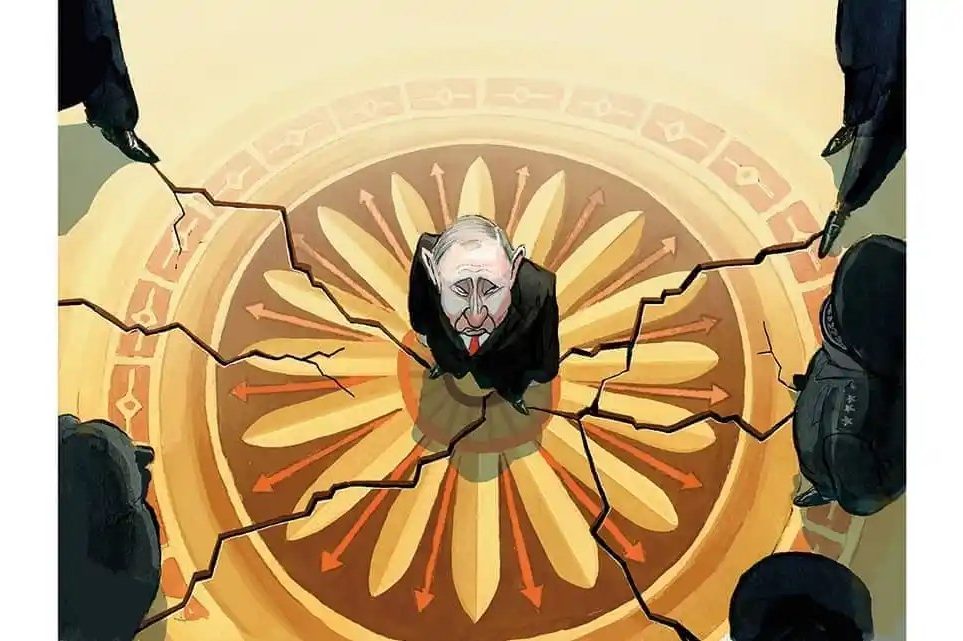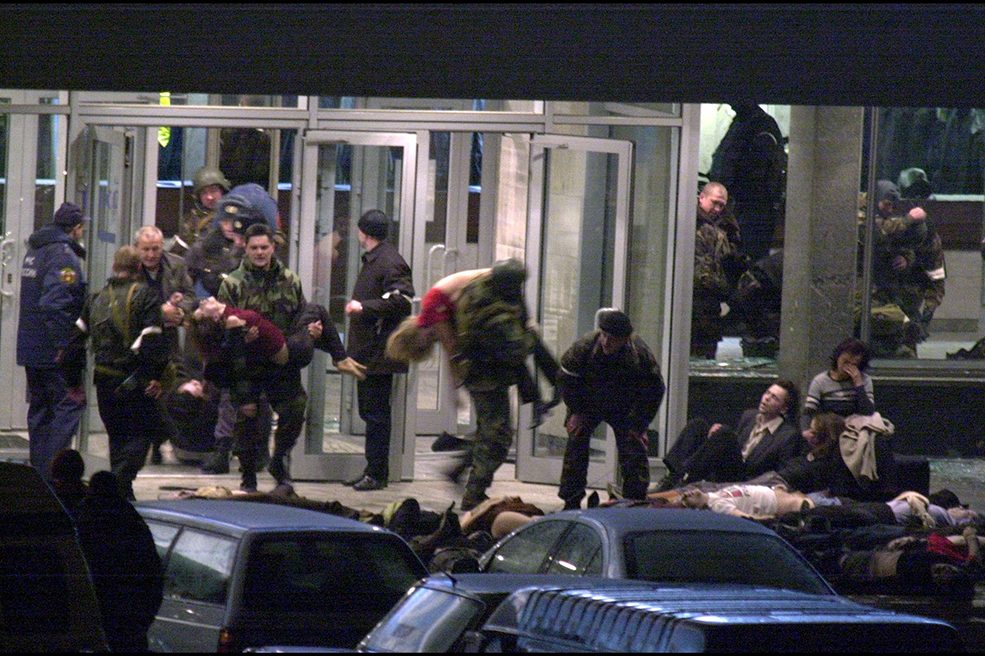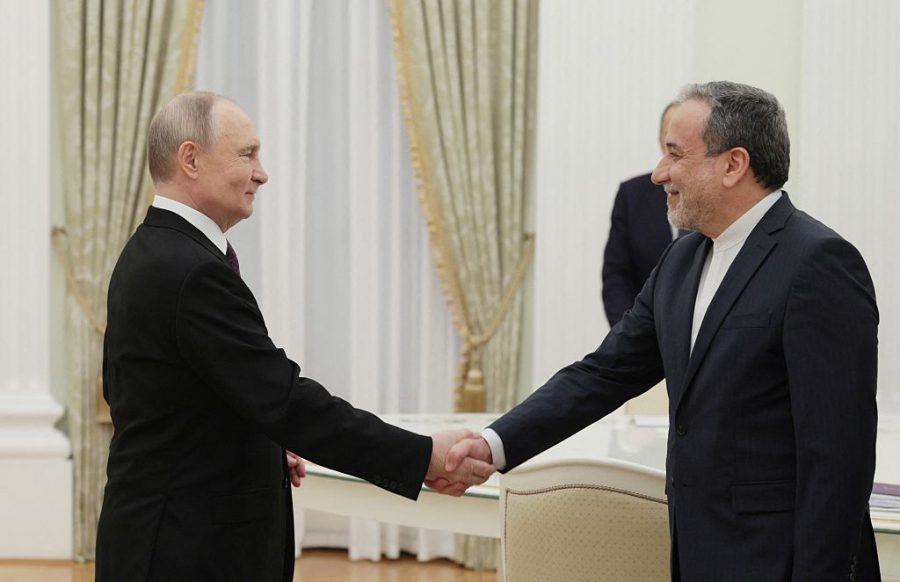There is no doubt that the West supports Ukraine’s fight for its sovereignty and survival. There is equally no doubt that, for all the fulsome rhetoric, this support is both conditional and limited by a desire to prevent the war from escalating. This was amply demonstrated by recent revelations about Washington’s relationship with Kyrylo Budanov, head of HUR, Ukrainian military intelligence.
Zelensky stepped in to block the operations, worried about the backlash not just from Moscow, but from other governments
The Washington Post reported this week that, as the one-year anniversary of the invasion approached, Budanov told his staff to prepare “mass strikes” against targets inside Russia — including Moscow — with, in the words of a classified National Security Agency report, “everything the HUR had.” One option mentioned in the article was bombing the Black Sea port city of Novorossiysk with explosive drones. Another, mooted in unconfirmed reports on Ukrainian social media, was sabotage attacks against police stations and similar targets in border towns.
As it was, according to a subsequent CIA report, Budanov “agreed, at Washington’s request, to postpone strikes.” The implication is that the whole idea of a campaign inside Russia had been scotched, with some suggesting that President Volodymyr Zelensky had to intervene.
It would not be the first time the Americans had expressed concerns at the ambitions of the Ukrainian intelligence agencies in general and with Major General Budanov in particular. At thirty-seven, he is a stripling by the standards of Ukraine’s high command and the world’s spymasters alike — and has acquired a reputation as an able, imaginative and driven officer. HUR has certainly been punching well above its weight in this war, from battlefield reconnaissance to, it seems, launching raids deep into hostile territory.
He is a regular figure in the media, claiming that Vladimir Putin is terminally ill and close to death, that the war will soon be over, and that Crimea would be recaptured this summer. Some of this is deliberate psychological warfare, an effort to unsettle and divide the Russian elite and hearten Ukraine’s allies. He also clearly relishes being a controversial public figure.
Enthusiasm for Budanov is often tempered by a certain wariness. A senior US official paused in the middle of an otherwise-enthusiastic appraisal of him to add, “but at times, he seems more interested in hurting Russia than winning the war.” As far as one Ukrainian politician was concerned, the issue was rather that “Budanov is ambitious. He’s come far, fast, and he doesn’t think he needs to stop. After the war is over, there will be all kinds of opportunities, he feels.”
Whatever the truth of the matter, it is clear that the West — or at least the United States — is working hard to try and restrain the Ukrainians from actions that risk escalation, but not always with full success. A direct strike against Crimea would, for example, be what one British Ministry of Defence analyst called “a direct threat to Putin, who would probably respond with everything he’s not dared use yet.” The reluctance to supply certain weapons is partially motivated by attempts to limit Kyiv’s capacity to launch such an attack.
Likewise, the August assassination of Daria Dugina, daughter of imperialist ideologue Alexander Dugin, has never been properly attributed, but Washington has since delivered stern warnings against such attacks in the future. Despite that, drone strikes across the border have continued — something both Moscow and Washington seem to have come to accept as legitimate — but there have also been further assassinations on Russian soil. Last month, a nationalist blogger, Vladlen Tatarsky, was killed by a bomb attack in St. Petersburg that many are suggesting was organized by Ukraine’s spooks.
Budanov is by no means alone in his assertive advocacy for a return to the 1991 borders, including Crimea. But he is also part of a smaller, more vociferous group that wishes to permanently undermine, if not disassemble, the Russian Federation. What is less commonly understood is the degree to which it often requires Zelensky’s own intervention, with the explicit or implicit support of Washington, to rein in the Ukrainian hawks.
Budanov was behind the 2021 “Wagnergate” sting operation, which planned to lure fighters from Russia’s mercenary army onto a plane that could be forced down over Kyiv so that they could be arrested. Later, he planned covert attacks against Wagner in Mali, where they were hired by the government, and against Russian troops in Syria. More recently, he has been encouraging the Moldovan government to move against the Russian-backed enclave of Transnistria. In each case, Zelensky stepped in to block the operations, worried about the backlash not just from Moscow, but from other governments.
Of course, one should not overstate the divisions. To quote the same Ukrainian politician, “we are all committed to the same destination, we just have different roads to it.” Nonetheless, as Kyiv comes under mounting pressure to articulate some vision of an endgame — other than complete Russian capitulation — the hawks could become a serious problem for Zelensky.
This article was originally published on The Spectator’s UK website.



